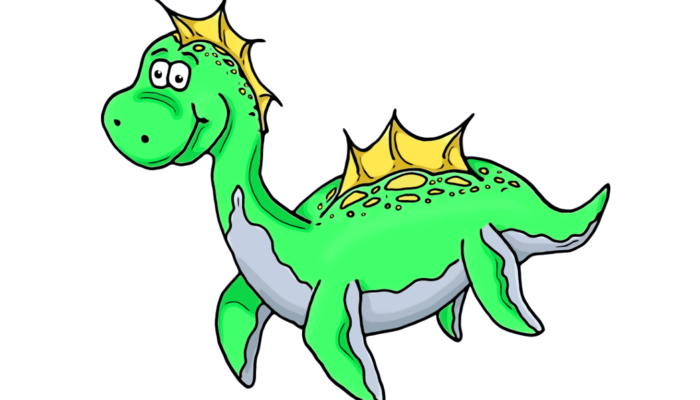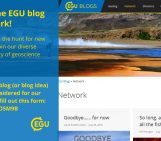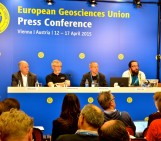
Did you know that the EGU has a public engagement grant scheme? We’ll be awarding three EGU members with 1500€ to help them develop an outreach project that aims to raise awareness of geosciences outside the scientific community. The 2020 call for applications is currently open.
In this GeoTalk interview, Olivia Trani talks to Astrid Harjung, Laura Coulson, Romana Hödl and Katrin Attermeyer, researchers at WasserCluster Lunz and the University of Vienna who won an EGU Public Engagement Grant in 2019. They are using the funds to develop an exciting and educative outreach activity around Lake Lunz in Austria based on the popular geocaching platform. If you are considering applying, then read on for tips on what makes a good outreach project and how they invested the prize money to develop a local initiative with an international reach.
Before we get started, could you introduce yourselves and tell our readers a little more about your backgrounds?
At the time of applying, we were colleagues and friends working together at the WasserCluster in Lunz. Astrid Harjung is a postdoc at the University of Vienna and was doing her research at the experimental flumes in Lunz and at a music festival site. She experienced that it is often quite hard to explain in a five minutes’ chat why we need to know so much more about carbon cycling in freshwater ecosystems. Laura Coulson is a PhD student working with biogeochemistry of intermittent streams. She works primarily with the outdoor experimental flumes in Lunz and frequently gives impromptu tours at the request of passing tourists. Romana Hödl works as an organisation assistant with a focus on outreach at WasserCluster Lunz. She really likes to communicate, teach, and build bridges. That’s the reason why she attended a technical high school with a focus on digital media, received a teaching degree in natural sciences, and now likes to brainstorm how to improve science communication. Katrin Attermeyer has spent parts of her science career in Germany, Sweden, and now Austria where she learned that speaking the native language and communication is the key to get in touch with locals. She is a postdoctoral fellow at WasserCluster Lunz interested in deciphering the role of the smallest organisms in the global carbon cycle.
Why did you all decide to apply for the grant?
The idea was actually born during an evening beer. Astrid and Romana were sitting by the lake, discussing what is missing in Lunz am See. Lunz is a popular tourist destination in the area and, especially in summer, visitors and locals alike enjoy the 5km walk around the lake. Researchers working outside in the field often receive many questions about their work and little information is visible about our research and the natural setting. During this evening lakeside conversation, the idea of setting up a geocache to provide a fun and educational activity for the people visiting Lake Lunz was born. After presenting this idea at a meeting, Katrin and Laura decided to join in. Katrin suggested that the EGU Public Engagement Grant would be a good opportunity to realise this idea. The following brainstorming sessions were very creative and fun. In the end, we have no idea who came up with which suggestion but we ended up with an interesting and engaging project.
Tell us more about the outreach project: what were the aims and how did you decide to meet them?
Our aim is to inform people walking around the lake about inland waters and the threats they are currently facing, mostly related to climate change and biodiversity loss. We also want to answer the questions we often get from visitors about the research that happens at WasserCluster Lunz. We want them to understand what we do and how we use our results to gain insights into the functioning of inland waters.
With these goals in mind, the idea of a geocache in our little village soon expanded to a full geocaching scavenger hunt around the lake. We wanted to make it interactive, so participants will have questions whose answers can be found on several informational signs around Lake Lunz. The answers will give coordinates that lead them to the geocache. With the help of Lunzi, the friendly lake monster (shown in the image above), kids will also be guided through information about the inland waters and their threats. We hope that every participant will understand and be motivated to protect our inland waters after they have completed the scavenger hunt.
What is the current stage of the project and what are the next steps?
After having spent some time to present the project to our colleagues, the village administration and other stakeholders, as well as organisng the offers and such, we are currently working on the texts of the informational signs. We will put up signs around the entire lake that will address topics like groundwater, catchment hydrology, insects, and lake food webs. The signs will also explain our experimental flumes and the weather station as part of the infrastructure of the WasserCluster Lunz.
The plan is to have the signs ready for set up as soon as the snow is gone in spring 2020 so they are ready when the tourists come back to explore the area. Overall, we had great feedback from our colleagues and the village administration, which is important to realise a project like this.
In your opinion, what gave this project the edge over other applicants in 2019?
It is hard to say what made our project stand out. We like that our project is a playful and interactive way to convey information about sensitive topics like climate change and biodiversity loss. What better way to learn about an ecosystem than when you are walking next to one? We are taking advantage of our location to provide an educational activity and we will hopefully enhance the visitors’ experience while at Lake Lunz.
We combine biology and geocaching into a new activity that we call “Biogeocaching.” We hope that this idea is picked up by other researchers who want to develop outreach projects for their topics related to natural sciences. Who knows? Maybe it will become a trend in research and we, as a research community within EGU, could create such a network.
The advantage of this project is that it is something that will continue informing people with minimal effort once it is completed. It can reach hundreds of people also several years from now. A QR code added to each sign will provide a link to current research, which can be easily kept updated and therefore is an easy tool for researchers to inform the public about their advances.
What top tips do you have for anyone wanting to develop a public engagement initiative?
First of all, get a beer and sit down with a group of people to talk. We think that the key to our success was that we took some time from our usually stressful jobs to talk about how we could best share what we doing as researchers. Good outreach does not need much more than a good idea and enthusiasm to develop and implement it. Of course, we recommend working in a team as we are having such a great time together, but any project that is based on a good idea and an enthusiastic team will have a good chance to be successful.
Has this interview inspired you? The 2020 call for applications is currently open. If you have an idea for a comic, podcast, documentary, set of experiments, or some other form of effective science communication that you want to promote, then please fill in the online application form and let us know why your project deserves to be funded.
We particularly encourage applications for projects aimed at engaging with hard-to-reach audiences, i.e., people or communities who are not generally interested in science or who tend to ignore mainstream scientific expertise.
Applications for the three EGU Public Engagement Grants are open from 15 November 2019 until 15 February 2020. The grants are for a period of 12 months and are awarded in full in April/May each year.


